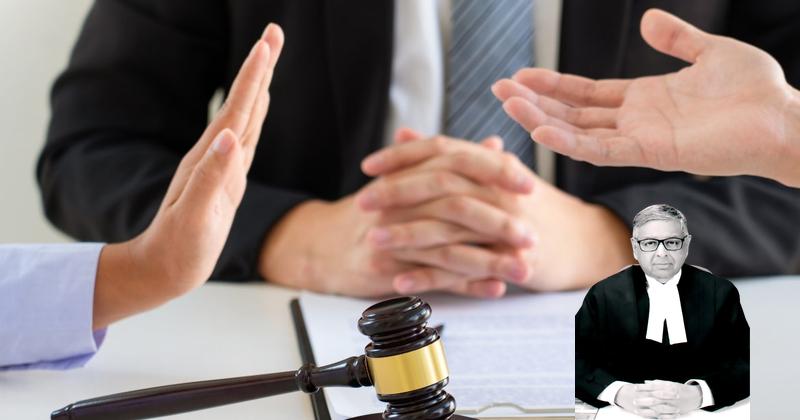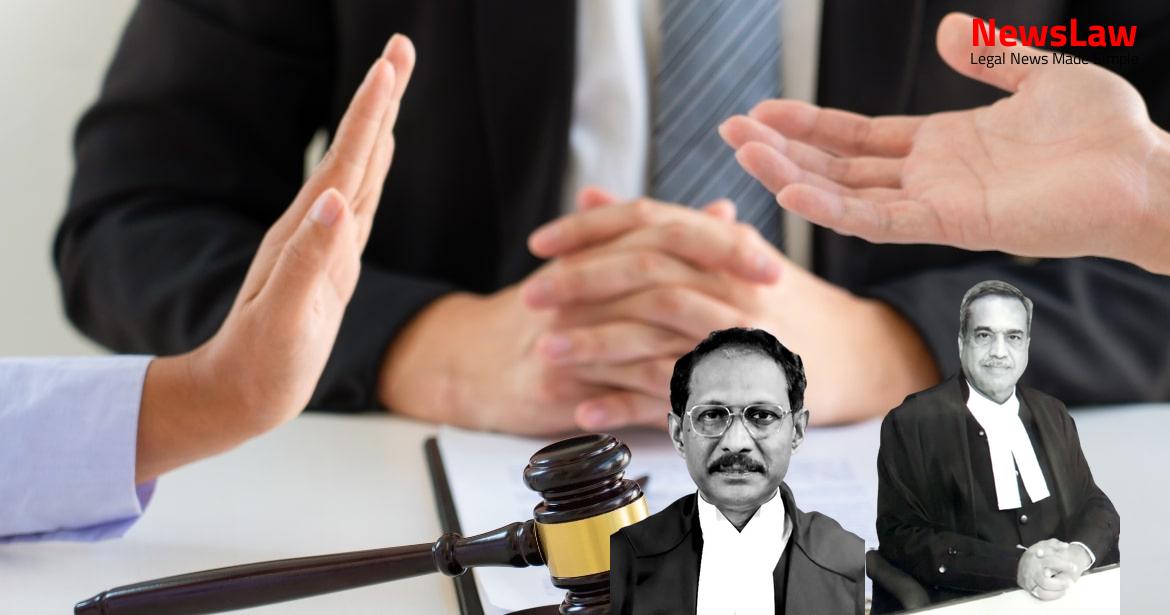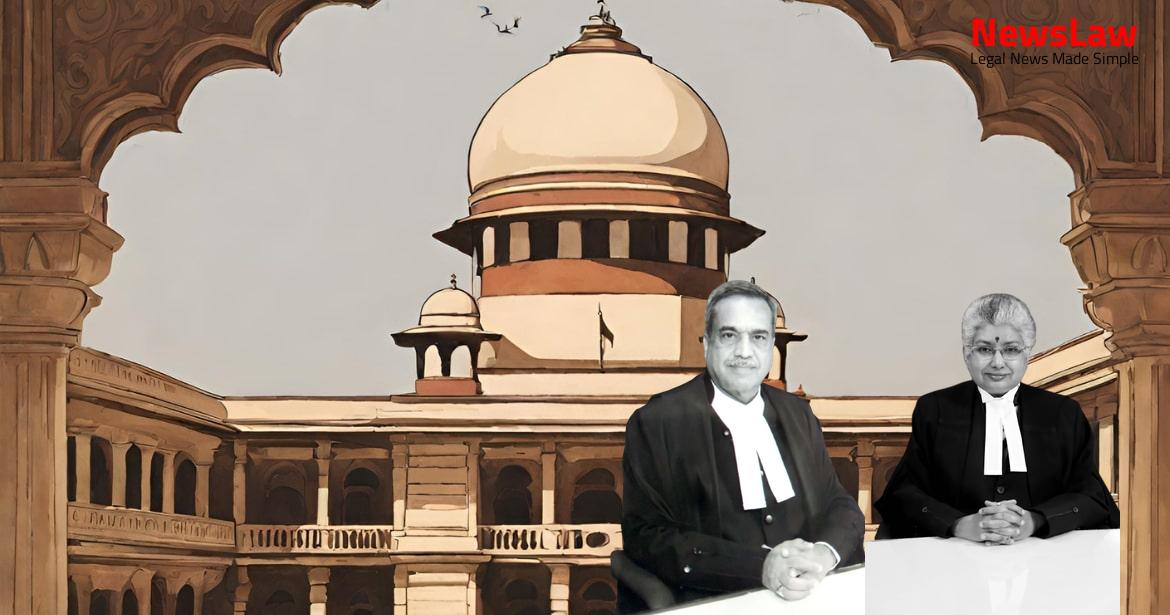In a recent legal case, the court’s in-depth legal analysis takes center stage as it sets aside the conviction of three accused individuals. The scrutiny of witness testimonies, investigative procedures, and the application of legal principles play a pivotal role in the court’s decision-making process. Let’s delve deeper into the complexities of this case and the nuanced legal reasoning behind the court’s ultimate verdict.
Facts
- The statement of the main witness PW-9 was recorded by the Police 21 days after the occurrence.
- All three accused were convicted under Section 302 read with Section 34 IPC and sentenced to life imprisonment with a fine of Rs.2500.
- A-2 was acquitted of charges under Sections 211 and 194 IPC.
- A-1 and A-2, husband and wife, filed an appeal in Criminal Appeal No.1323 of 2009, while A-3 filed a separate appeal in Criminal Appeal No.727 of 2009.
- The High Court confirmed the conviction and sentence based on the testimony of PW-9 and medical evidence.
- The Sessions Court disbelieved the evidence of PW-6 but accepted a portion of the statement of PW-7.
- The High Court overlooked the fact that PW-6 and PW-7 were declared hostile witnesses.
- PW-6 and PW-7 were named as accused in the First Information Report.
- Accused Nos. 2 and 3 challenged their conviction for the offence of Section 302 read with Section 34 IPC.
- The case involved the three accused attacking and killing Pappu @ Nand Kishore on the night of 13.05.2008
- Accused A-2 tried to mislead by sending false information to the Police implicating other individuals in the assault
- A-2 and A-3, who are siblings, appealed against the charges along with Accused No. 1 (Raju Yadav)
- Prosecution relied on eye-witness accounts, medical evidence, and weapon recovery for the case
- Witnesses PWs 4, 5, 6, 7, and 9 were key to the prosecution’s case, with PWs 6 and 7 initially being accused by A-2
- There were discrepancies in the witness statements between their testimony in court and to the police
- The Sessions Court believed some parts of the witness testimony, especially regarding the presence of the accused at the crime scene
Also Read: Land Dispute: Court’s Analysis on Condonation of Delay
Arguments
- Reliance placed on seizure of knife and lathis allegedly used in the offence from accused houses
- Argument by State’s counsel that guilt of accused established beyond reasonable doubt
- Sessions Court and High Court justified in relying on evidence of PW-9 and others
- A-1 noted as Respondent No.2 in appeal filed by A-2
- Counsel for appellants point out contradictions and inconsistencies in testimonies of PWs 9 and 14
- Conviction argued to be based on surmises and unsustainable in law
Also Read: Legal Analysis on Waiving Waiting Period in Mutual Divorce Cases
Analysis
- The investigation into the FIR registered at the mother-in-law’s behest revealed a conspiracy by the first informant and her daughters-in-law to commit murder.
- The Police report to the Court stated that the allegations in the original FIR were false.
- A fresh FIR was registered against the original informant and others, leading to a charge sheet being filed.
- The CJM’s charge under Section 302 was quashed by the High Court upon appeal.
- The Police officer, IO, showed bias from the start by assuming guilt of the informant’s family and favoring the original accused.
- Multiple witnesses’ statements were taken, but the investigation focused on framing the informant and family as culprits.
- Statements by PW-9 and PW-14 raised doubts on the integrity and fairness of the investigation.
- Political pressure was evident in the investigation process, leading to the framing of the informant and her family as accused.
- The High Court overlooked critical admissions and evidence that pointed to a biased investigation against the informant’s family.
- Contradictions and lack of concrete evidence, such as bloodstains not being matched, cast doubt on the prosecution’s case.
- The IO’s actions and the prosecution’s strategy throughout the investigation raised suspicions of ulterior motives and failure to seek the truth.
- The investigation’s focus shifted from the original accused to framing the informant and family members, influenced by political pressure.
- Recovery of weapons does not always become insignificant due to failure in detecting the origin of blood.
- Judicial efforts should focus on reasonable doubts rather than imaginative ones.
- Matching or non-matching of blood groups loses importance once recovery is made based on the accused’s disclosure statement.
- No fixed formula exists for the prosecution to prove matching blood groups.
- Mere presence of blood-stained earth does not conclusively prove human blood and victims’ blood.
- Failure to connect bloodstained clothes with the deceased’s blood led to acquittal in a case.
- Human blood on a knife does not prove it belongs to the deceased’s blood group.
- Inconsistencies in linking bloodstains to the victim’s blood can dent the credibility of recovery evidence.
- Shri Shreeyash U. Lalit, learned counsel for the State argued that A-1’s case is different and relief cannot be granted without an independent appeal by him.
- Denying A-1 the benefit of the conclusion solely because he did not file an appeal would be unjust, especially considering the power of the court under Article 142 to ensure complete justice.
- The court noted that A-1 did not file an appeal, unlike the 26 other appellants.
- The court clarified that the conclusion in this case is based on disbelieving the entire prosecution story.
- The appeals by the appellants are considered deserving to be allowed in this context.
Also Read: Limitation Period Extension in IBC Case
Decision
- The appeals filed by the appellants have been allowed.
- The conviction of all three accused, including A-1, has been set aside.
- The three accused shall be released immediately, unless held in custody for another case.
Case Title: MADHAV Vs. THE STATE OF MADHYA PRADESH (2021 INSC 413)
Case Number: Crl.A. No.-000852-000852 / 2021



